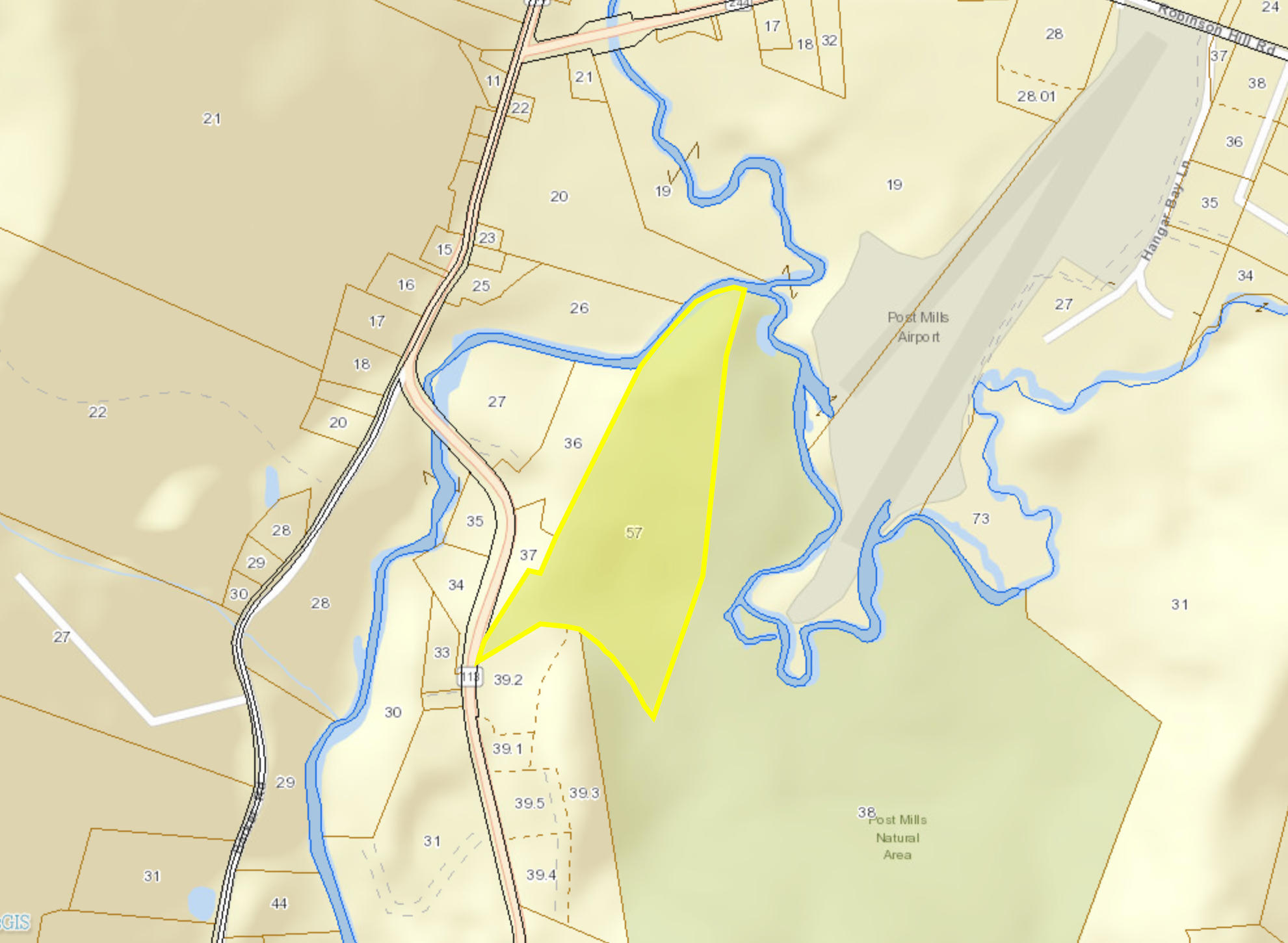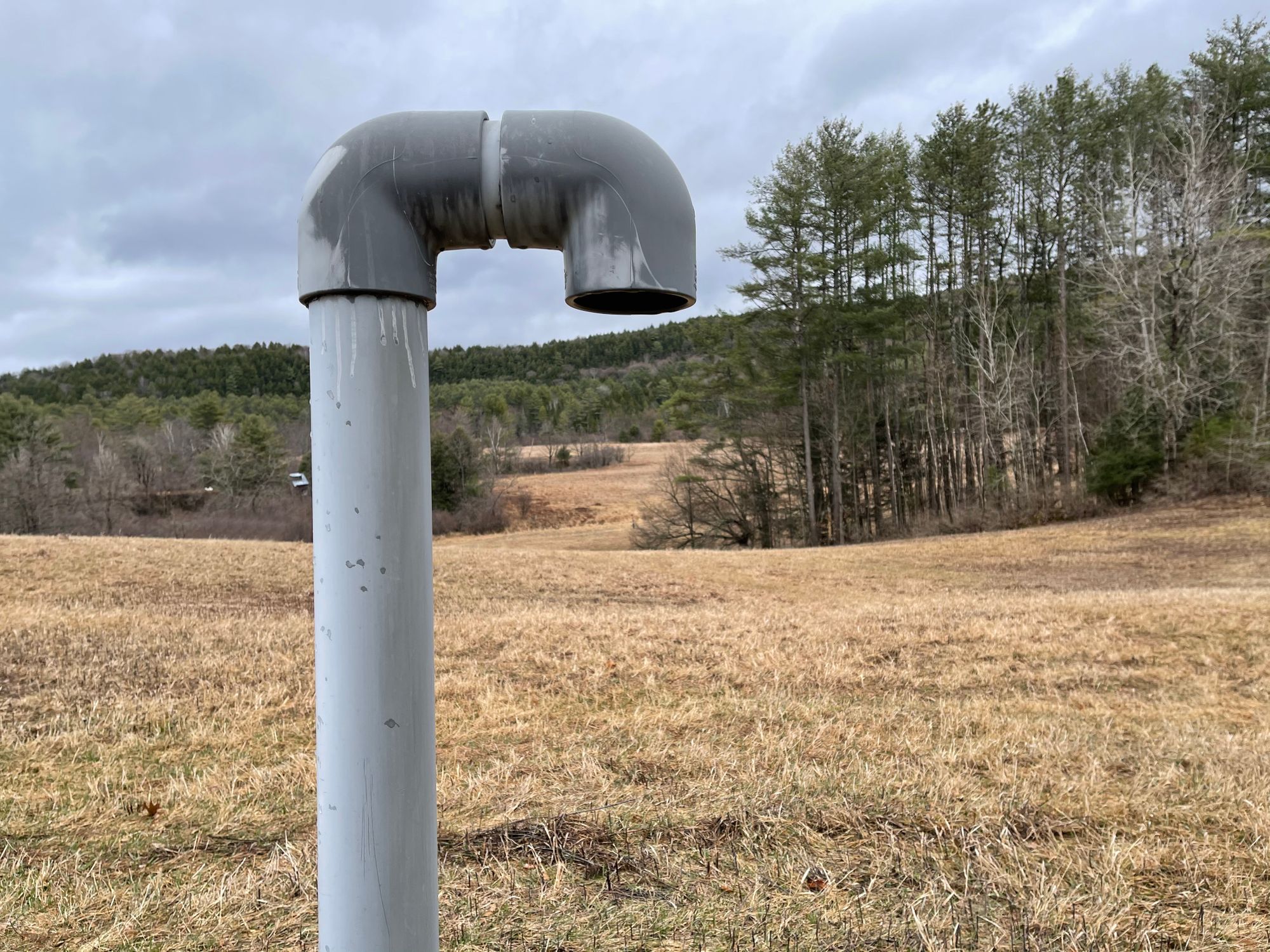Water woes in Post Mills (Part 1)
During the 1980s when the state was closing landfills built without an impervious liner, the landfill in Post Mills continued to accept trash from around the state. It too is an unlined landfill.

In the past few years, a couple of Post Mills residents chose to cancel development plans. One homeowner backed away from building a mother-in-law house. Another nixed plans to raise beef cattle on their land. Was there a common thread? It turns out that both stories revolve around the water supply near the closed landfill in Post Mills (the former Upper Valley Regional Landfill or UVRL).
The landfill has been closed since the early 1990s. However, during the 1980s when the state was closing landfills built without an impervious liner, the UVRL continued to accept trash from around the state. It, too, is an unlined landfill. It finally shut down after several neighbors found contaminants in their wells that were typical of landfill leachate. The landfill closure settlement paid for the construction of a replacement water supply that draws unpolluted water from the nearby Post Mills Nature Area. However, the system was sized to supply only those homes originally affected. More recent would-be water users found themselves out of luck.

How many future developments might be stymied by the pollution of the aquifer? Or, to put it another way, do we know the true extent of the problem, and will it go away sometime in the future?
When the landfill was closed, it was capped with a waterproof membrane and a layer of clay to halt water percolation into the aquifer. The closure settlement put money into a state-operated fund to pay for water testing by the Waste Management Division of the Vermont Department of Environmental Conservation (DEC). There are eight monitoring wells around the landfill that are sampled periodically to keep track of the pollutant levels.
All well and good, but there are a few caveats. The cap on a landfill does not last forever. Estimates on a cap’s life run from a rosy industry standard of several hundred years to a mere fifty years in other published estimates. About twenty years of this time has expired. When the cap fails, water will trickle through the landfill and reach the aquifer again. Furthermore, the fund that finances the water testing is slowly being depleted.

According to the the DEC, long-term care of closed landfills mandates that water testing continue until “concentrations of contaminants attributed to the facility are stable, decreasing, or non-detectable over the most recent 5-year period” and are below the Groundwater Enforcement Standard, or GES. The GES figure is the level of a contaminant that is deemed by the state to not pose a significant threat to health. On the positive side, many of the contaminants in the water are volatile organic compounds or VOCs — chemicals such as benzene, methyl-2-pentanone, chloroethane, and a host of others. Organic compounds such as these decay over time. At some point they will fall below the GES allowed by the state. It may have been the hope that by the time the fund for testing runs out, that VOC levels would be lower than their GES.
This scenario was upended by the finding in 2018 of PFAS in a monitoring well. PFAS stands for a class of chemicals known as per- and polyfluoroalkyl substances. There are over 4000 different PFAS in commercial and industrial use. They are extremely stable to heat and do not break down in the environment or in the body, giving them the nickname “forever chemicals.” This makes them ideal for high-temperature applications like fire retardants. They are also slippery and shed water and are used to manufacture a host of products, from Gore-Tex to Teflon (e.g. non-stick cookware), fabric stain protectant, food packaging, and ski wax. But they accumulate in the environment and in the body, and they are likely carcinogenic.
Around 2016, sparked by the detection of high levels of PFAS in Bennington wells near the ChemFab Teflon factory, people started testing water supplies near landfills for PFAS. At Post Mills, the state tested the cleanest and most distant of the monitoring wells. Indeed, PFAS was found, but the Agency of Natural Resources declared the level (6.7 parts per trillion or ppt) to be below the GES standard of 20 parts per trillion and that no further testing was needed. This did not satisfy a concerned resident who called on State Representative Tim Briglin to demand a test of a more heavily contaminated well. In 2019 the DEC complied, and a second well showed PFAS at 21ppt, a little above the GES accepted level. The Selectboard pressed for all wells to be tested, and in 2020 a total of four of eight were found to carry PFAS, two at above the GES standard.
Estimates on the “safe” level of PFAS in drinking water present an unclear picture. In 2015 the EPA recommended 70 ppt. However an earlier study in 2013 by the Harvard School of Public Health and the University of Copenhagen recommended 0.3 ppt. In 2017 scientists from the non-profit Environmental Working Group set a guideline of 1 ppt, reflecting the reduced effectiveness of vaccines and impact on mammary gland development.
Since PFAS persist indefinitely, the test results beg several questions: How long will testing be necessary? Do the wells represent the true extent of PFAS in the south Post Mills aquifer, and is it still changing? Who is responsible for maintaining the landfill cap, since nobody claims ownership of the landfill, not even the State?
Now a new player has entered this story. Green Mountain Economic Development Corporation, a non-profit organization which seeks to “to foster and develop economic vitality and prosperity consistent with the goals of the communities we serve,” proposes to take ownership of the UVRL site with an eye to renting it out to a solar company.
This is a good use of a brownfield, but as usual the devil is in the details. These will be covered in Part 2 of this article. Stay tuned.
